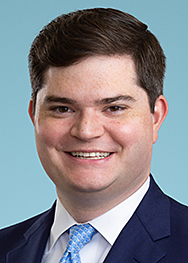 In today’s volatile global economy, companies are learning the hard way that political shocks—whether through trade sanctions, military conflict or abrupt regulatory change—can wreak havoc on supply chains. And worse, many are discovering that their existing insurance coverage may not offer relief.
In today’s volatile global economy, companies are learning the hard way that political shocks—whether through trade sanctions, military conflict or abrupt regulatory change—can wreak havoc on supply chains. And worse, many are discovering that their existing insurance coverage may not offer relief.
The Beginning of the End of an Era? Competition to Delaware’s Supremacy as Corporate Domicile and Implications for D&O Insurance
 Delaware has long been the leading jurisdiction in which companies incorporate. According to Delaware’s published statistics from 2023 :
Delaware has long been the leading jurisdiction in which companies incorporate. According to Delaware’s published statistics from 2023 :
- Delaware surpassed two million total business entities domiciled in the state,
- 67.6% of all Fortune 500 companies were incorporated in Delaware, and
- 80% of IPOs in the U.S. were in Delaware
Because of Delaware’s long-held title as the premiere state of incorporation, it has developed an advanced mosaic of corporate statutes and precedential law consisting of protections for both corporate officers and directors as well as shareholders. Some of the most well-known features of Delaware corporate law are:
Untying the Gordian Knot: The Second Circuit (Re)joins the Fray of Reverse Preemption of International Arbitration Provisions in Insurance Policies
 The Second Circuit Court of Appeals has weighed in (again) on a still unsettled issue in the realm of insurance law: whether arbitration provisions in insurance policies issued by foreign insurers are enforceable notwithstanding states’ anti-arbitration statutes? If they are, coverage disputes between policyholders and insurers are likely to be relegated to arbitral decision under insurer-favored arbitration clauses; if not, policyholders may pursue their rights in a more favorable forum. In Certain Underwriters at Lloyds, London v. 3131 Veterans Blvd LLC, the Second Circuit abrogated its previous decision in Stephens v. American International Insurance and answered this question in the affirmative, finding such provisions enforceable under the Convention on the Recognition and Enforcement of Foreign Arbitral Awards (also known as the “New York Convention”).
The Second Circuit Court of Appeals has weighed in (again) on a still unsettled issue in the realm of insurance law: whether arbitration provisions in insurance policies issued by foreign insurers are enforceable notwithstanding states’ anti-arbitration statutes? If they are, coverage disputes between policyholders and insurers are likely to be relegated to arbitral decision under insurer-favored arbitration clauses; if not, policyholders may pursue their rights in a more favorable forum. In Certain Underwriters at Lloyds, London v. 3131 Veterans Blvd LLC, the Second Circuit abrogated its previous decision in Stephens v. American International Insurance and answered this question in the affirmative, finding such provisions enforceable under the Convention on the Recognition and Enforcement of Foreign Arbitral Awards (also known as the “New York Convention”).
Permit? So What! — Illinois Supreme Court Poised to Test the Limits of Pollution Exclusions
 The Illinois Supreme Court has teed up a significant insurance question: Does a standard pollution exclusion bar coverage when the alleged “pollution” was not considered to be pollution when the policy issued—where the substance was lawfully emitted under an environmental permit?
The Illinois Supreme Court has teed up a significant insurance question: Does a standard pollution exclusion bar coverage when the alleged “pollution” was not considered to be pollution when the policy issued—where the substance was lawfully emitted under an environmental permit?
The court accepted a certified question from the Seventh Circuit on April 17, 2025, in Griffith Foods International Inc. v. National Union Fire Insurance Co.—a case that springs from the Sterigenics ethylene-oxide suits. The court’s agreement to consider the question signals the potential for a landmark ruling on the scope of pollution exclusions, with far-reaching implications for companies dealing with environmental and related toxic tort claims.
Parametric Insurance: The Future-Proof Solution for Enterprise Risk
In today’s fast-paced and increasingly unpredictable global environment, large enterprises face mounting risks—natural catastrophes, climate-related disruptions, supply chain breakdowns and emerging digital threats. Traditional insurance has long been the foundation of risk management, offering indemnification based on losses incurred. But a new model is gaining traction: parametric insurance. Unlike traditional policies, parametric insurance offers rapid, transparent, predetermined payouts based on predefined triggers. For enterprises with complex, global exposures, it’s proving a smart, scalable complement—or alternative—to conventional coverage.
California Supreme Court Bars Damages Limitations for Willful Injury
On April 24, 2025, the California Supreme Court in New England Country Foods, LLC. v. VanLaw Food Products, Inc., issued an opinion by Justice Lius holding that California Civil Code section 1668 “invalidates limitations on damages for willful injury to the person or property of another.”
Congratulations to William McMichael!

Colleague William McMichael recently won the 2025 Franklin Jones Best CLE Article Award for “So You’ve Got a Verdict…What Now?! Post-Verdict Procedure and Practice Tips for Texas Insurance Lawyers.”
McMichael’s article offers a practical roadmap for Texas insurance lawyers navigating the complex post-verdict landscape.
The Latest on PFAS: What Policyholders Need to Know Now
We have previously written on the evolving risks associated with PFAS—also known as “forever chemicals”—and their implications for policyholders navigating environmental liabilities involving both PFAS and PFAS-related chemicals (i.e., fluorinated chemicals that do not fit the definition of PFAS). Our prior analyses explored coverage strategies and regulatory enforcement trends. With regulatory activity and litigation continuing to accelerate, we are circling back to provide an updated look at the regulatory and legal landscape surrounding PFAS, including recent federal developments, insurer responses and practical guidance for policyholders navigating this complex and high-stakes area. To meet these risks, policyholders with potential exposure are well advised to review their general liability coverages, including both historical occurrence-based policies, pollution legal liability policies and any new terms added to current renewals.
Insurance Coverage Considerations for Tariff and Trade-Related Losses
 Since President Trump took office on January 20, 2025, the administration has implemented significant changes to U.S. trade policy, including most notably with respect to tariffs. Within weeks of taking office, the White House announced changes to tariffs on steel and aluminum which placed a tariff of 25% on all such imports. New tariffs were also separately imposed on imports from Canada, Mexico and China subject to certain exceptions. Then, on April 2, President Trump announced “reciprocal” tariffs on most imports from most countries, branding the day as “Liberation Day” and one of “American industry rebirth.” These tariffs, which include a 10% baseline rate and higher specific tariffs targeting China, Vietnam and the EU, among others, prompted heightened concerns about a trade war. Then, on April 9, President Trump announced that although the 10% baseline reciprocal tariff will remain effect, the higher reciprocal tariffs will be postponed for 90 days—except for China, for which the reciprocal tariff and duties are being increased to 105%, which are being applied in addition to prior 20% duties and the Section 301 duties.
Since President Trump took office on January 20, 2025, the administration has implemented significant changes to U.S. trade policy, including most notably with respect to tariffs. Within weeks of taking office, the White House announced changes to tariffs on steel and aluminum which placed a tariff of 25% on all such imports. New tariffs were also separately imposed on imports from Canada, Mexico and China subject to certain exceptions. Then, on April 2, President Trump announced “reciprocal” tariffs on most imports from most countries, branding the day as “Liberation Day” and one of “American industry rebirth.” These tariffs, which include a 10% baseline rate and higher specific tariffs targeting China, Vietnam and the EU, among others, prompted heightened concerns about a trade war. Then, on April 9, President Trump announced that although the 10% baseline reciprocal tariff will remain effect, the higher reciprocal tariffs will be postponed for 90 days—except for China, for which the reciprocal tariff and duties are being increased to 105%, which are being applied in addition to prior 20% duties and the Section 301 duties.
How Trump’s DEI Rollback Affects Nonprofits and How to Protect Your Organization
 Since taking office, President Trump has issued sweeping executive orders targeting Diversity, Equity, and Inclusion (DEI) initiatives across federal agencies and directing agencies to take action to encourage private organizations to follow suit. On January 20, 2025, President Trump signed executive orders (EOs) titled Ending Racial and Wasteful Government DEI Programs and Preferencing and Extremism and Restoring Biological Truth to the Federal Government. The following day, he issued another EO titled Ending Illegal Discrimination and Restoring Merit-Based Opportunity. On January 22, 2025, the White House published a Fact Sheet providing guidance related to these orders. Many states were early adopters of such initiatives—e.g., in 2023 Florida passed a bill banning DEI initiatives in public colleges—or are now following suit in dismantling these programs as well within state agencies and institutions (such as Indiana, Mississippi, West Virginia, among others).
Since taking office, President Trump has issued sweeping executive orders targeting Diversity, Equity, and Inclusion (DEI) initiatives across federal agencies and directing agencies to take action to encourage private organizations to follow suit. On January 20, 2025, President Trump signed executive orders (EOs) titled Ending Racial and Wasteful Government DEI Programs and Preferencing and Extremism and Restoring Biological Truth to the Federal Government. The following day, he issued another EO titled Ending Illegal Discrimination and Restoring Merit-Based Opportunity. On January 22, 2025, the White House published a Fact Sheet providing guidance related to these orders. Many states were early adopters of such initiatives—e.g., in 2023 Florida passed a bill banning DEI initiatives in public colleges—or are now following suit in dismantling these programs as well within state agencies and institutions (such as Indiana, Mississippi, West Virginia, among others).




